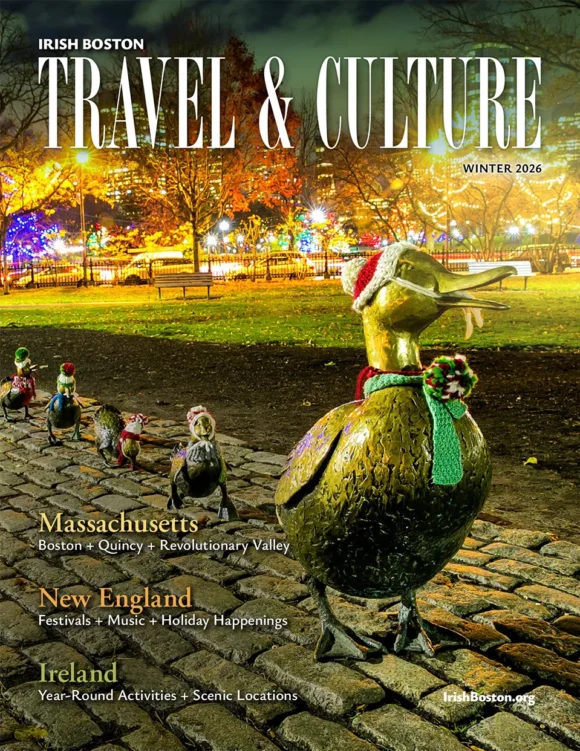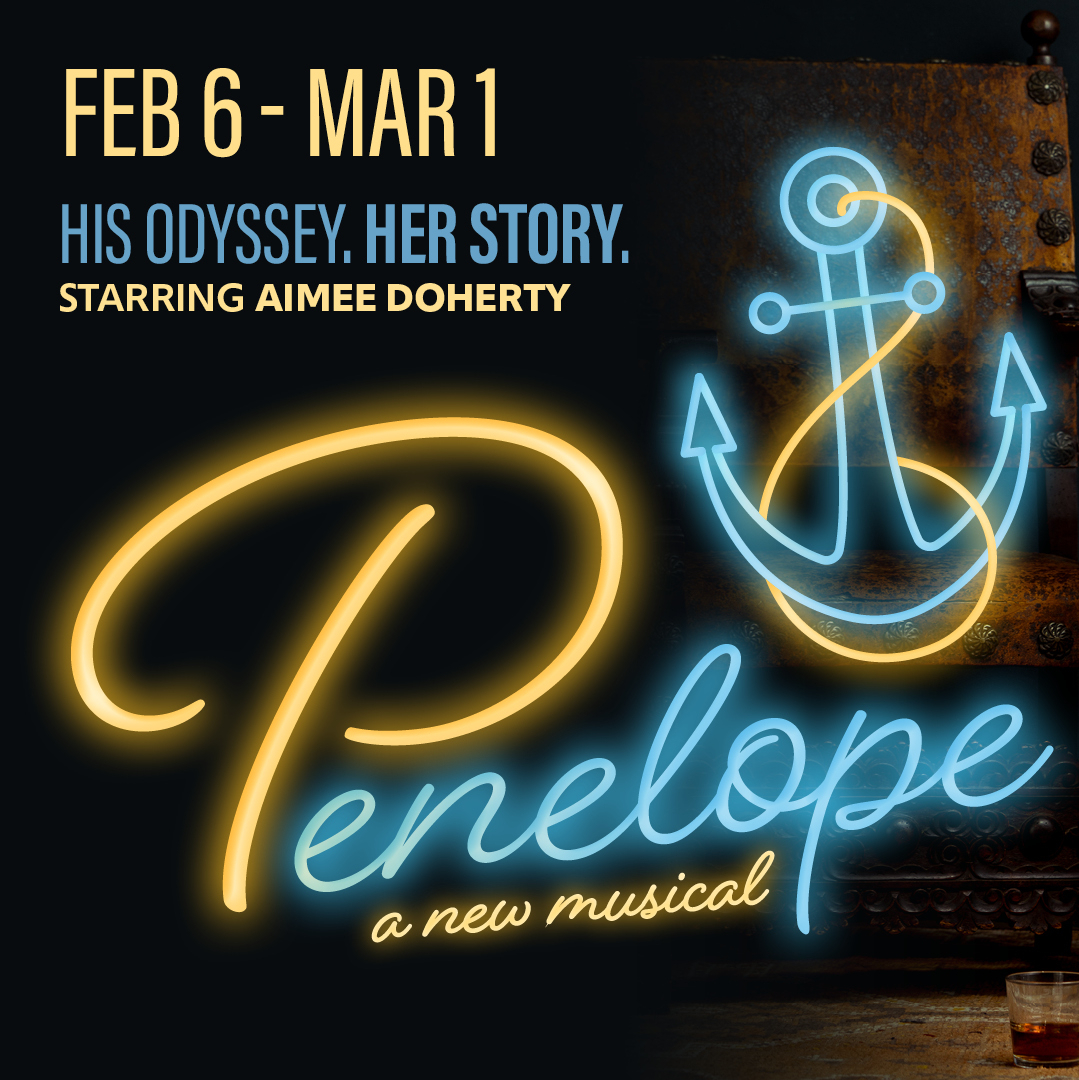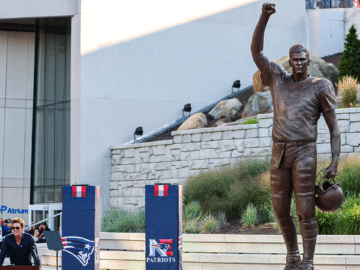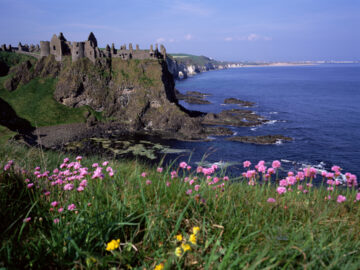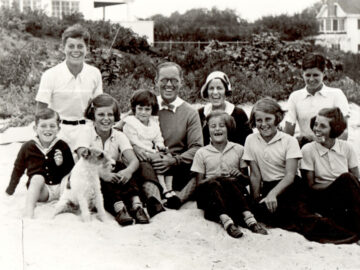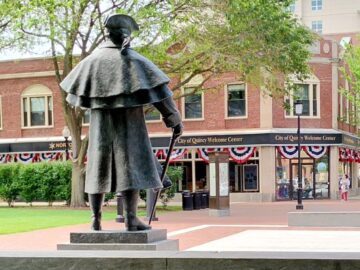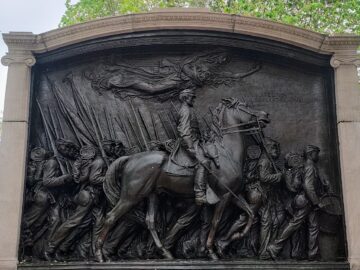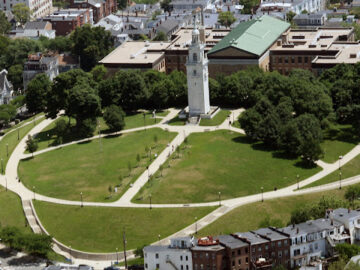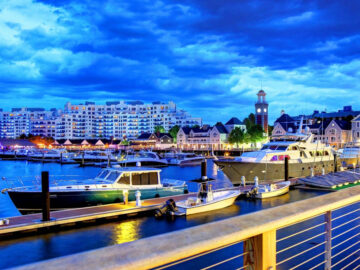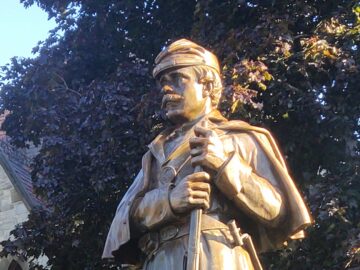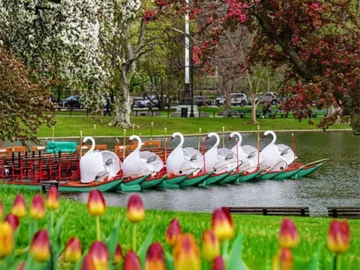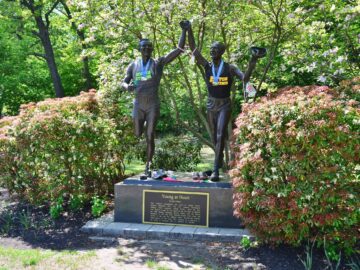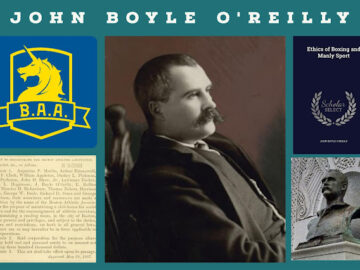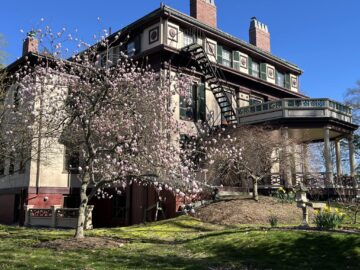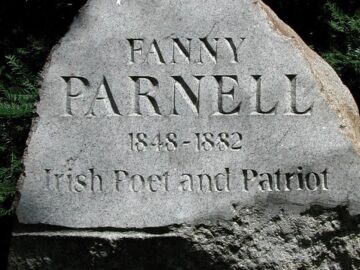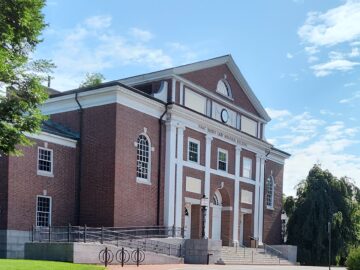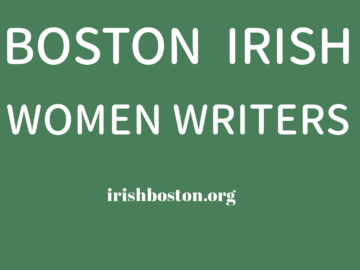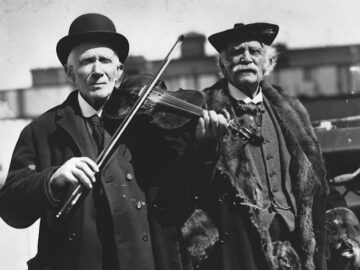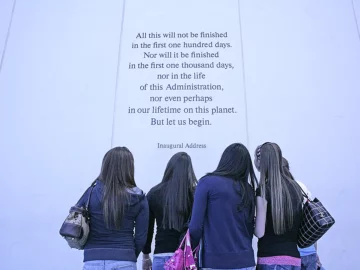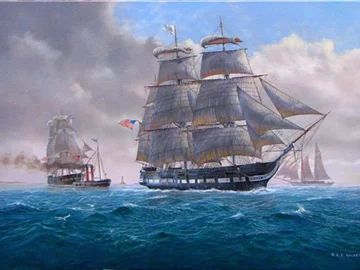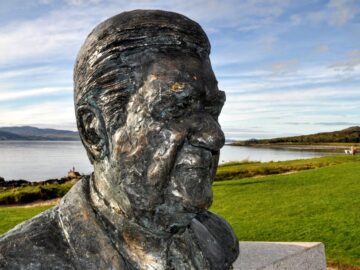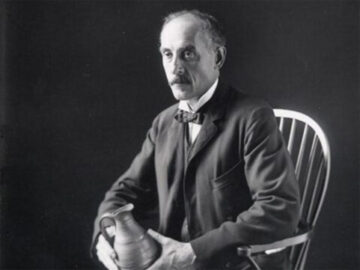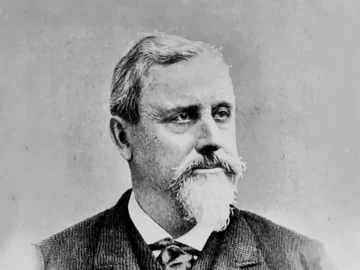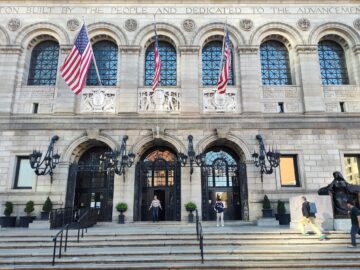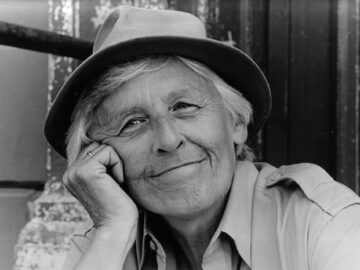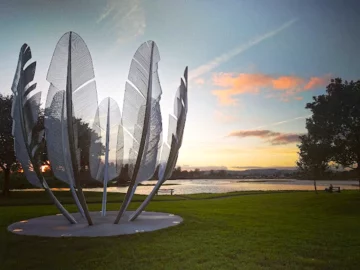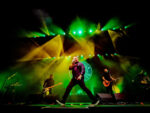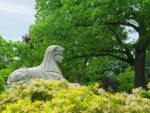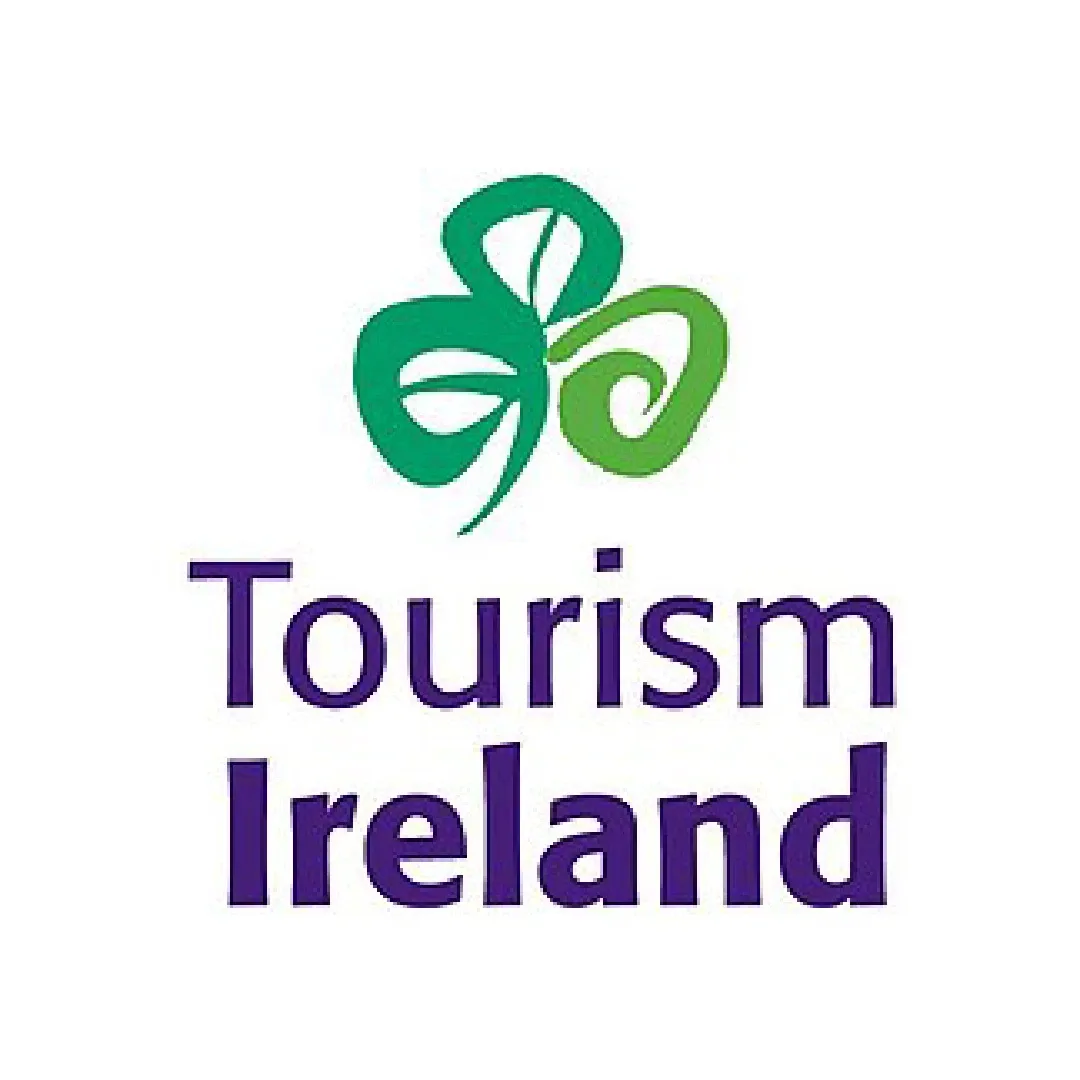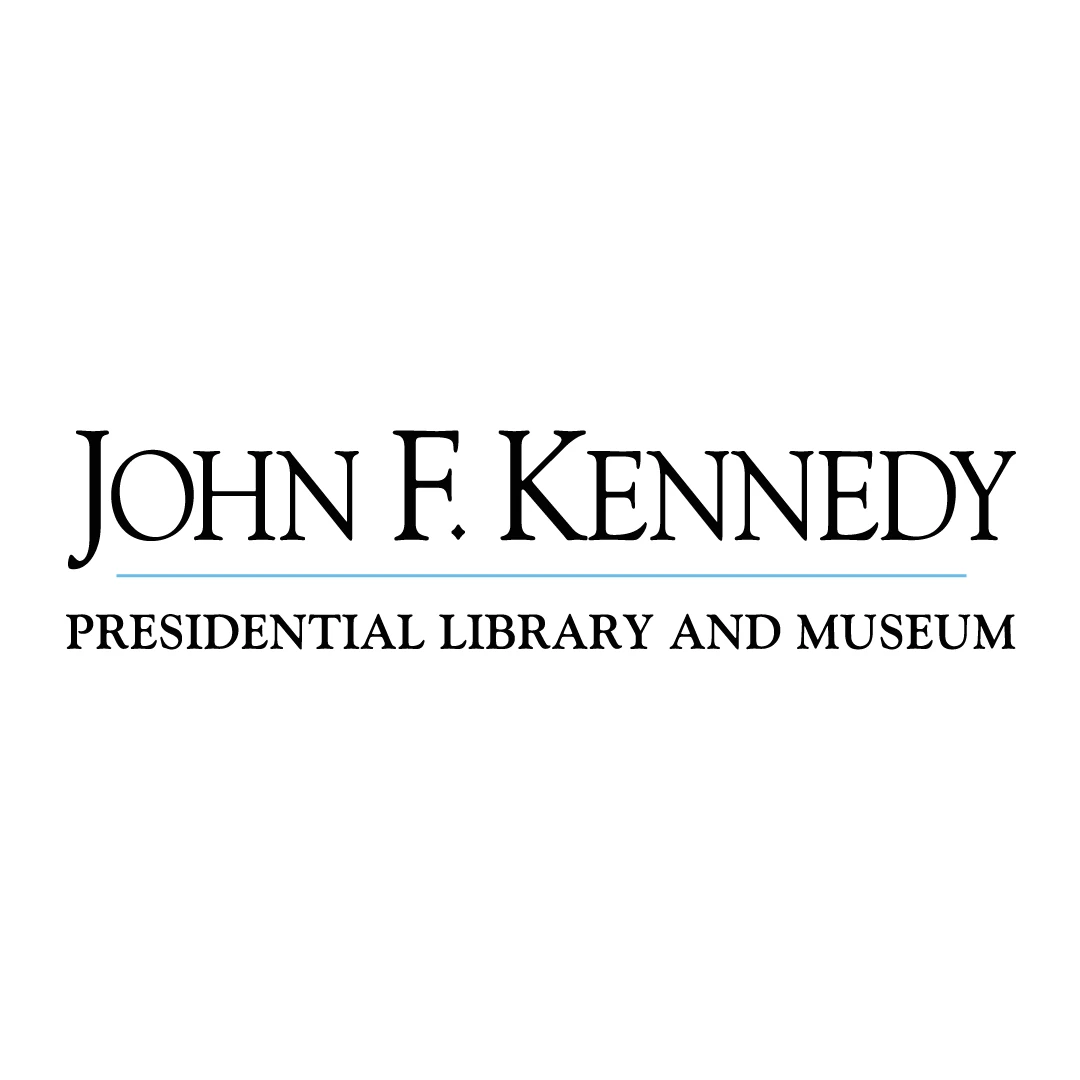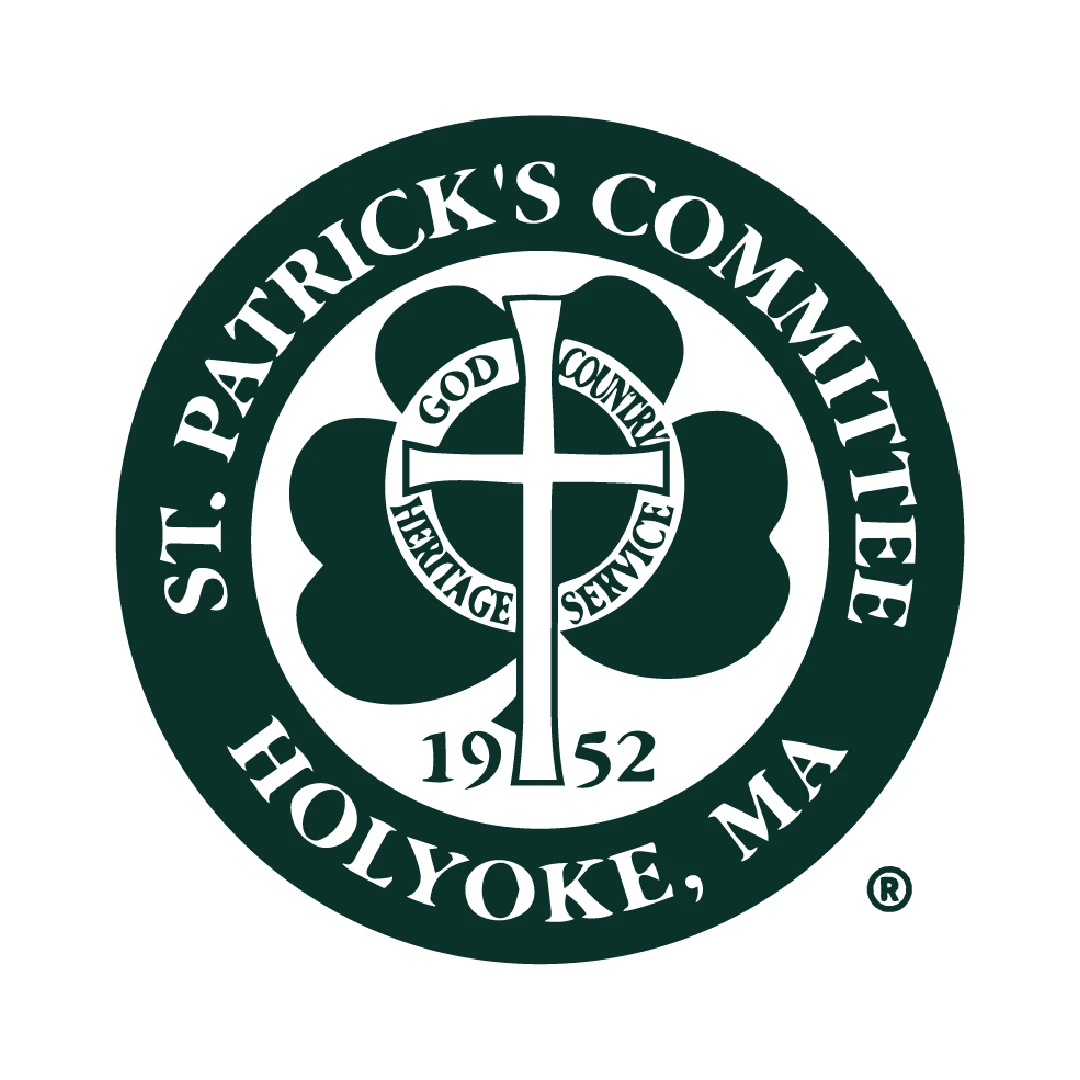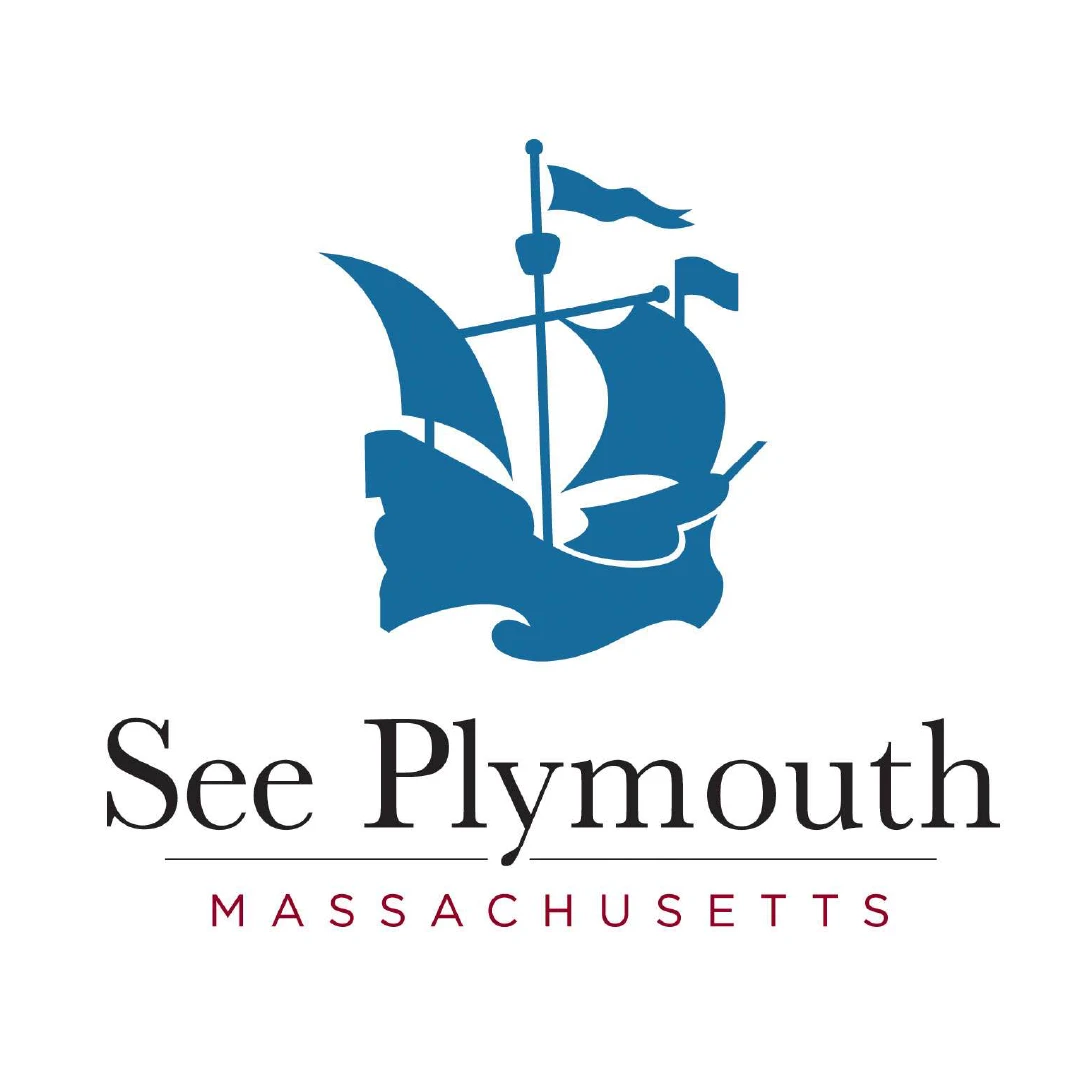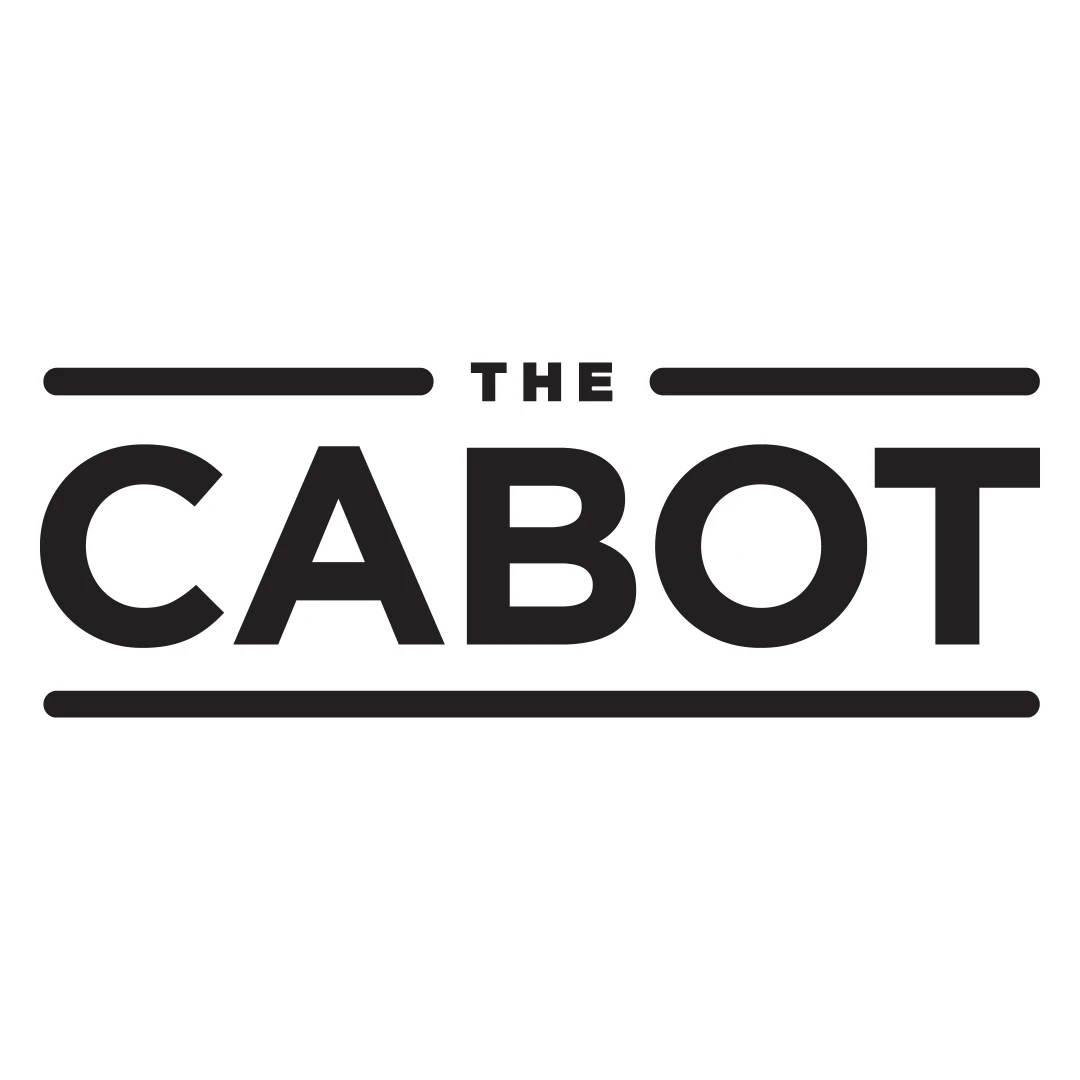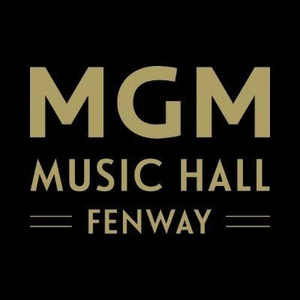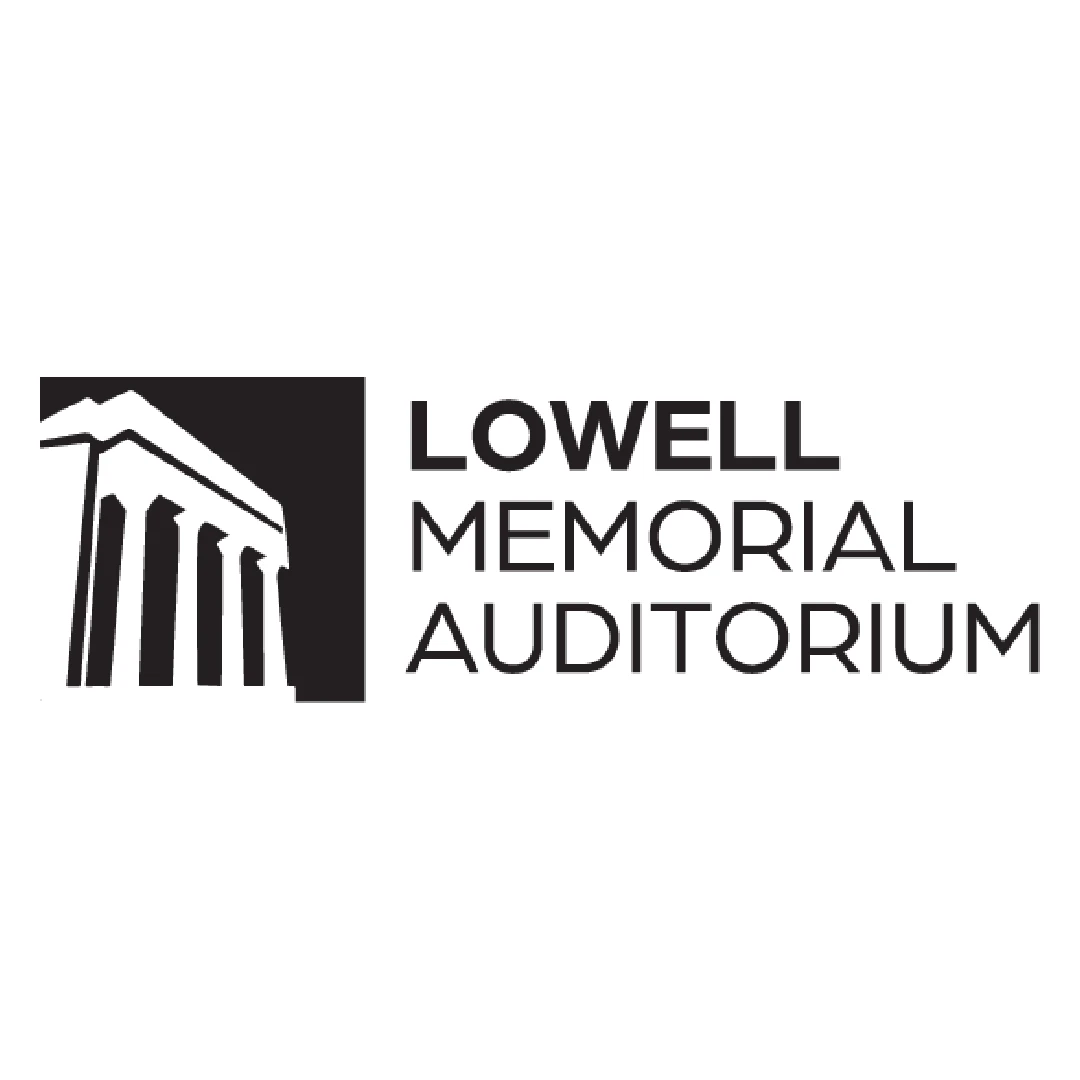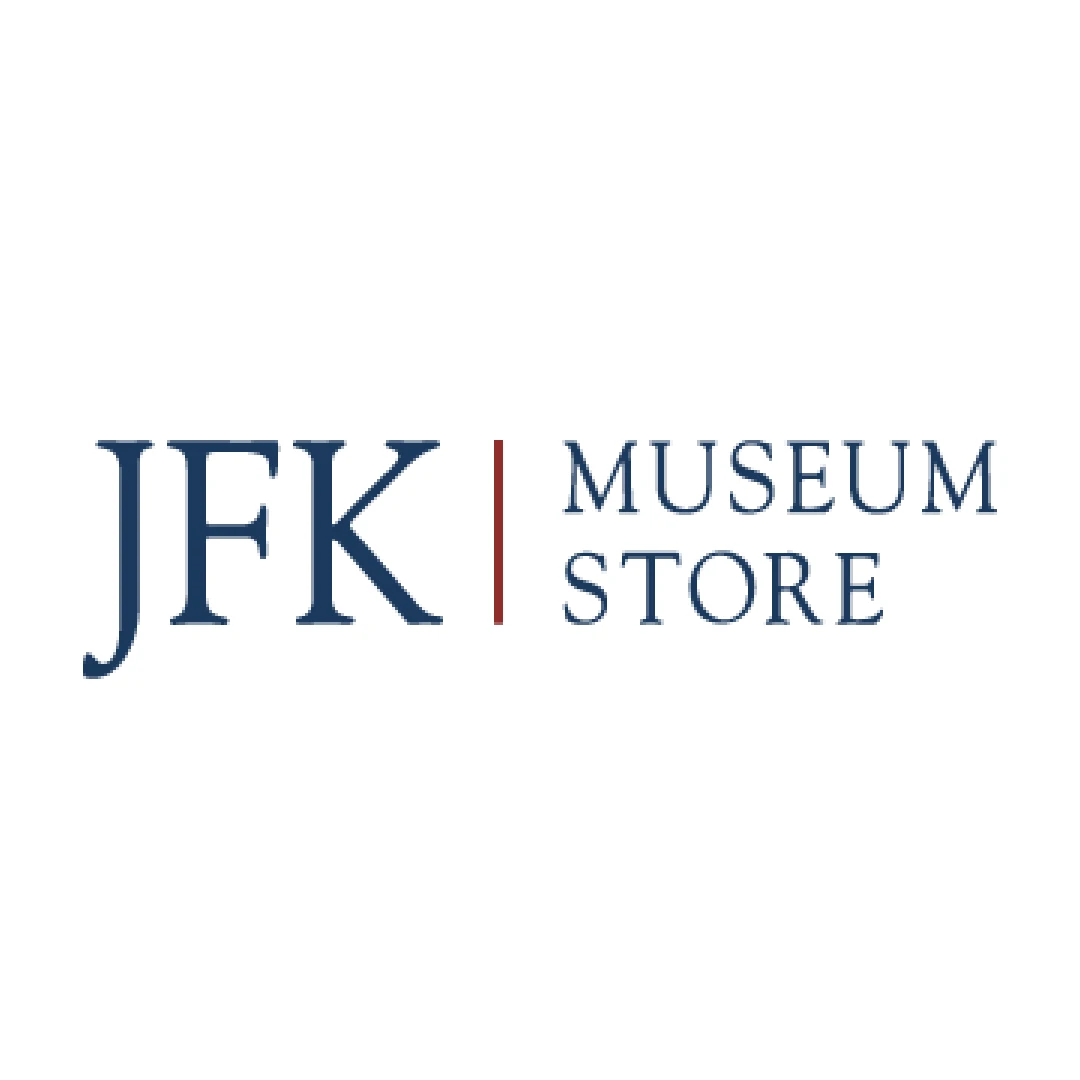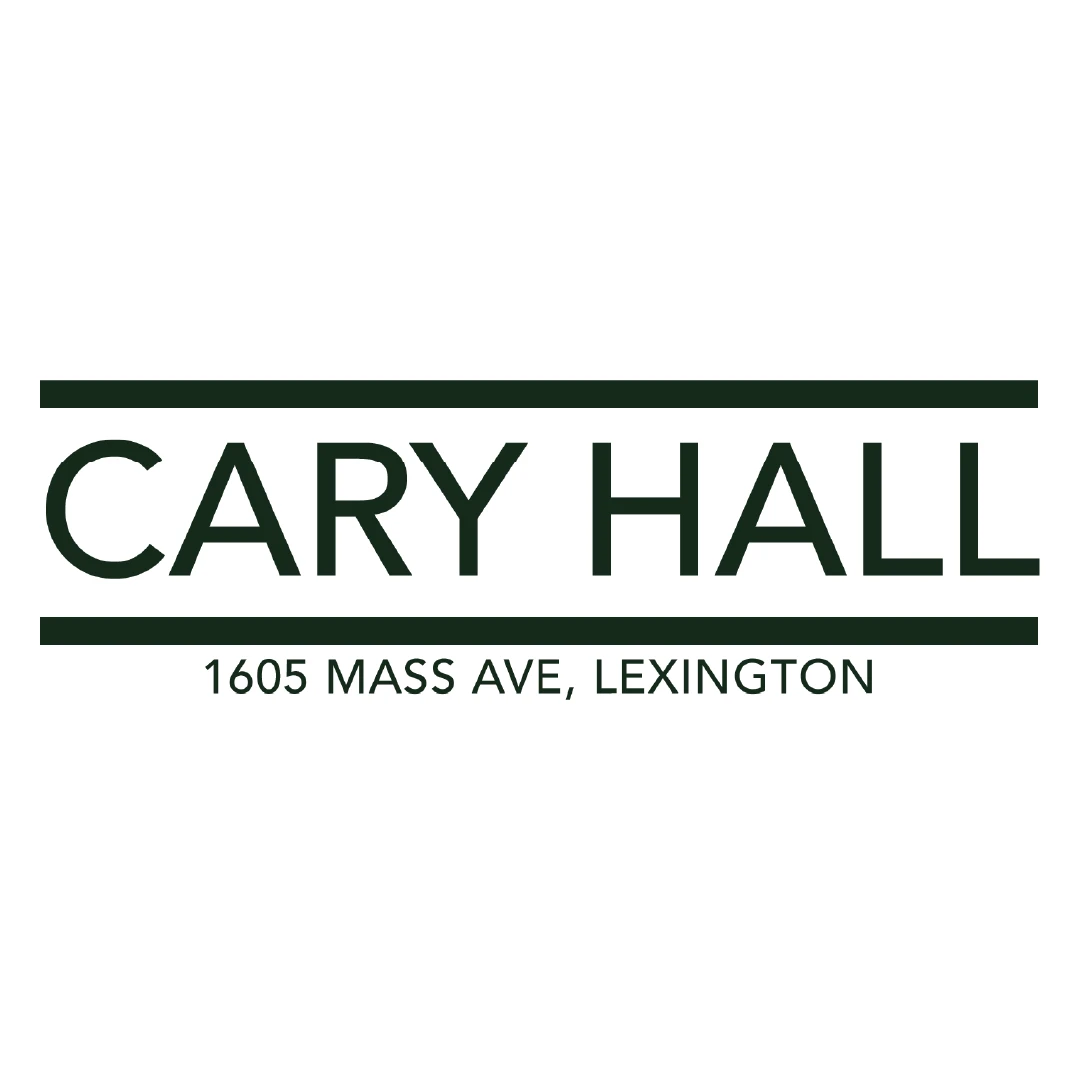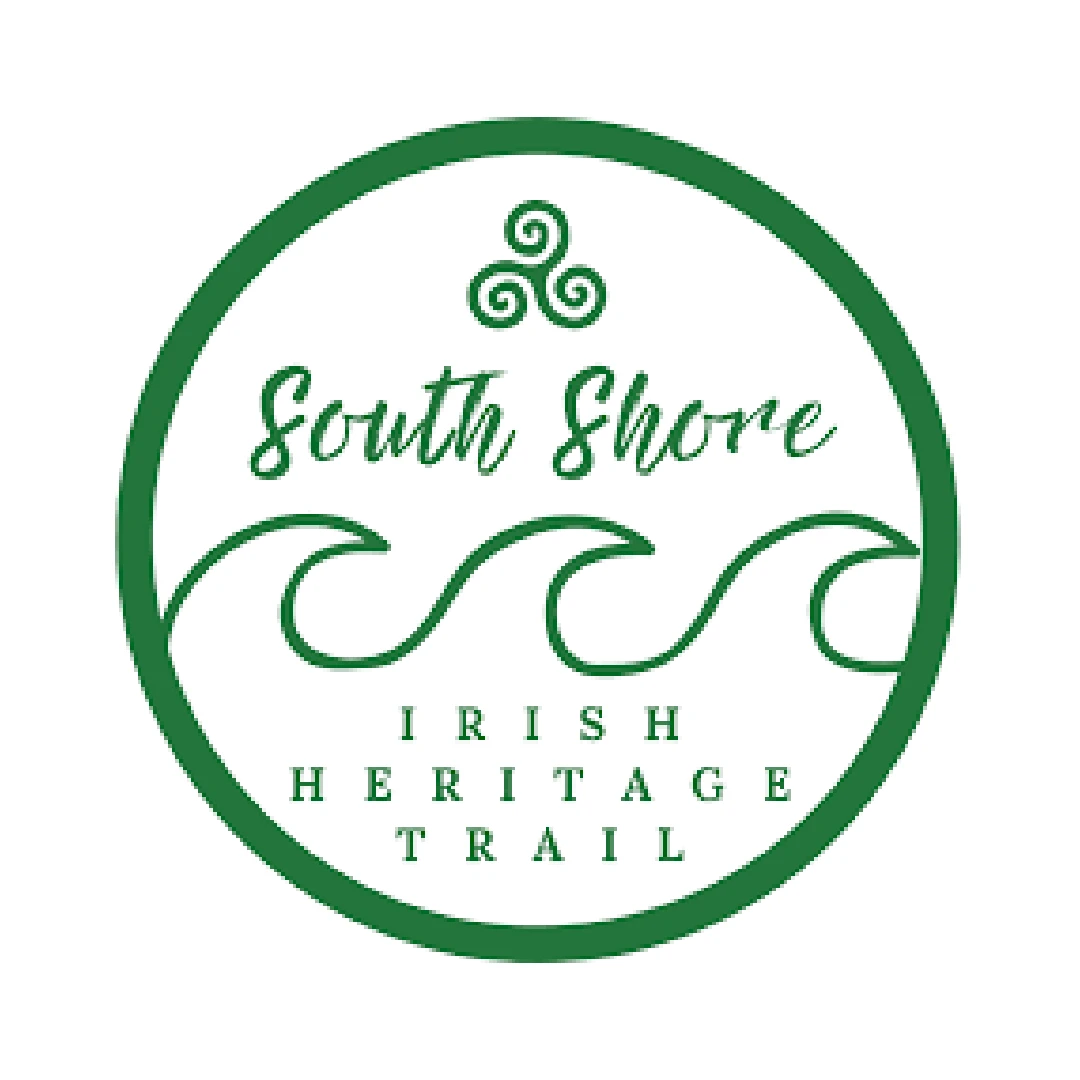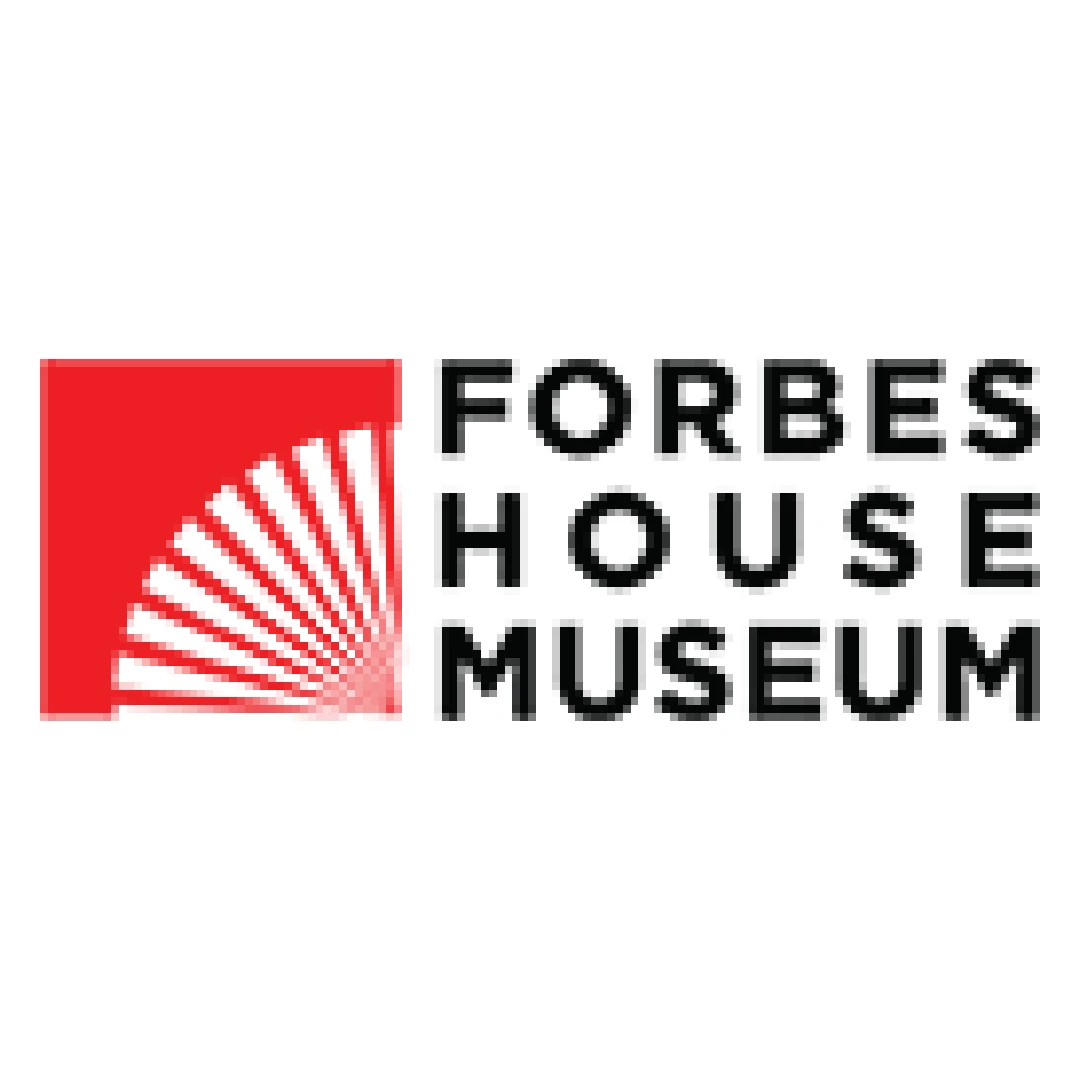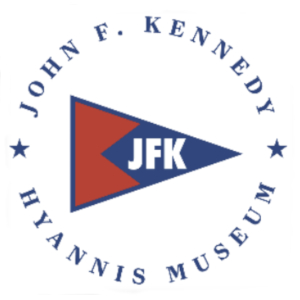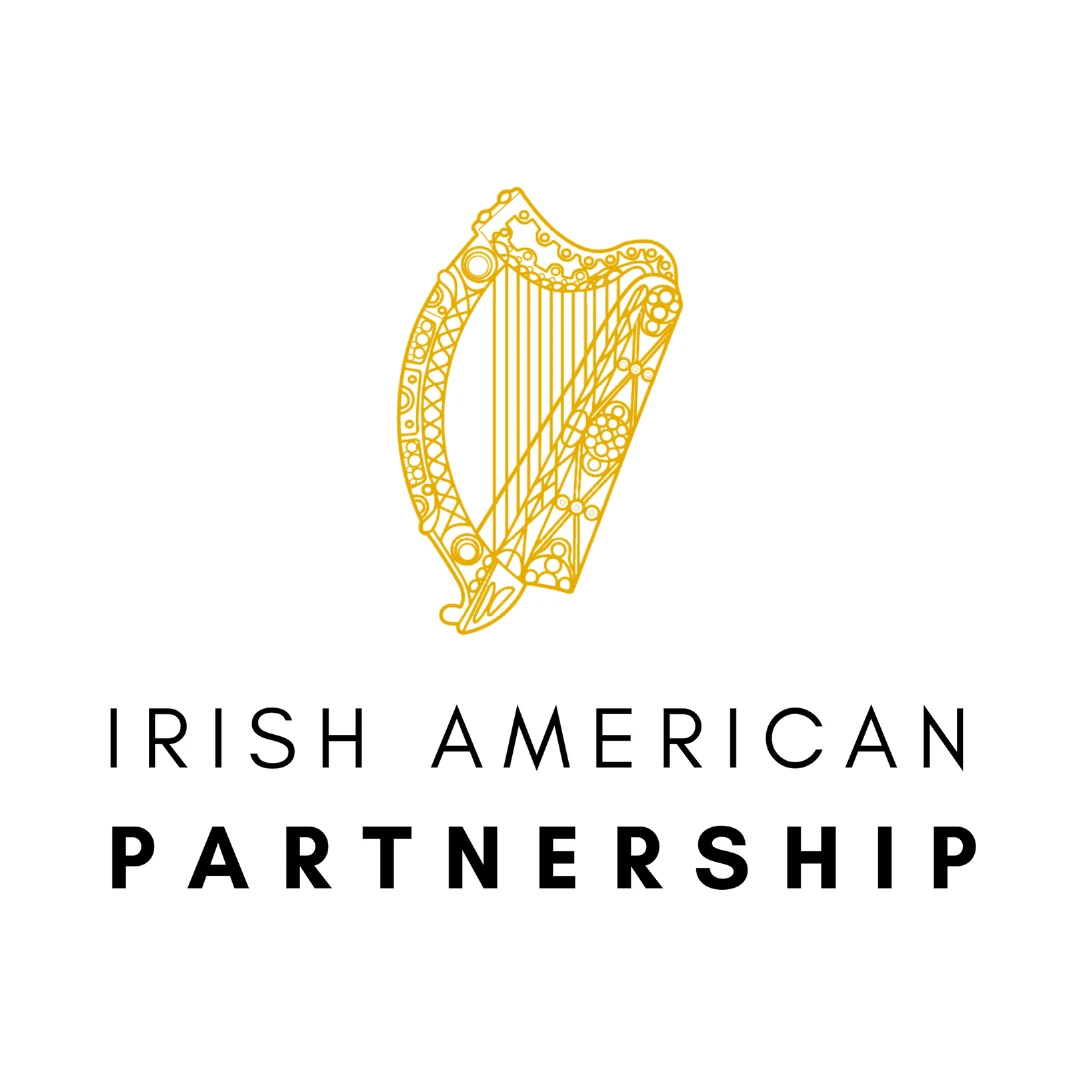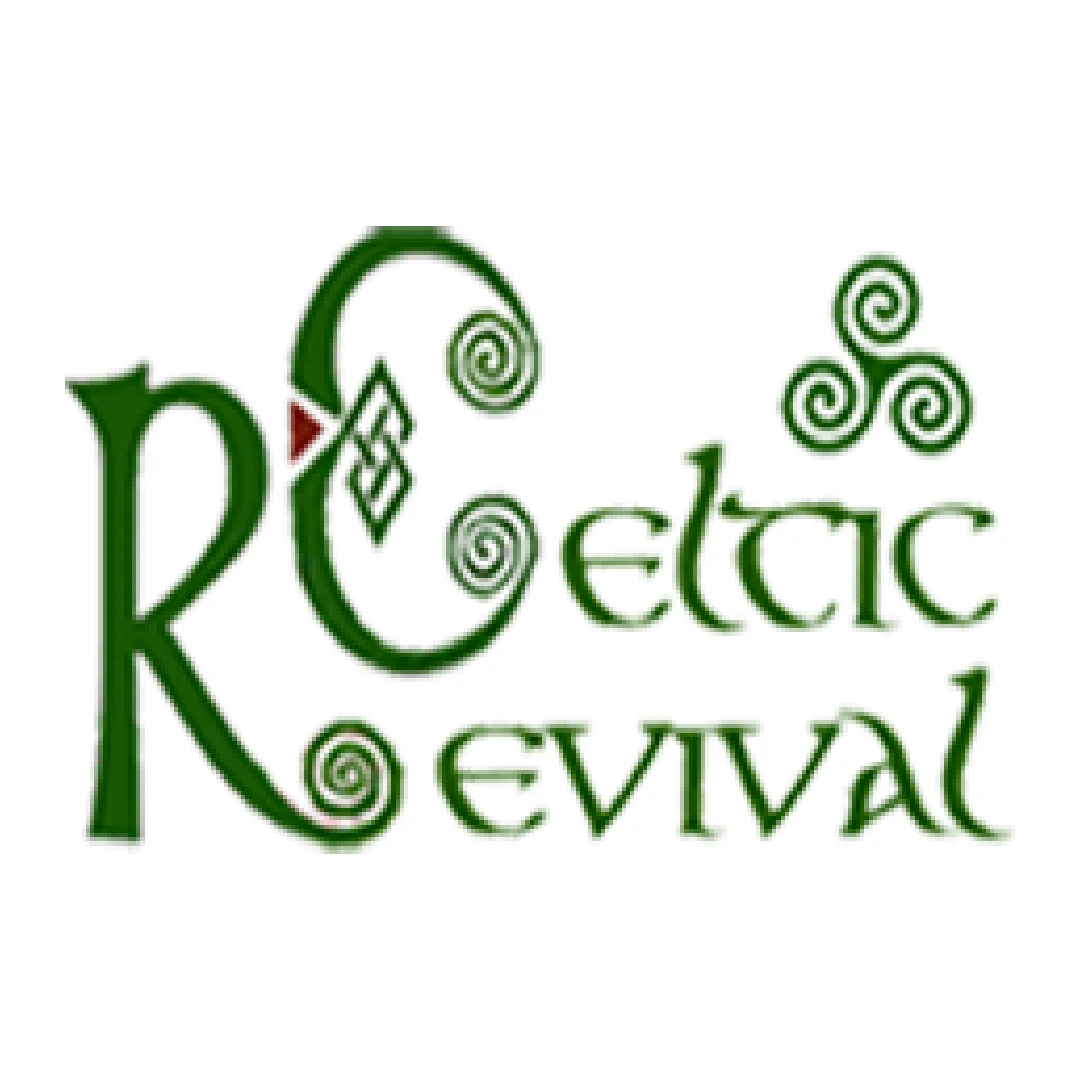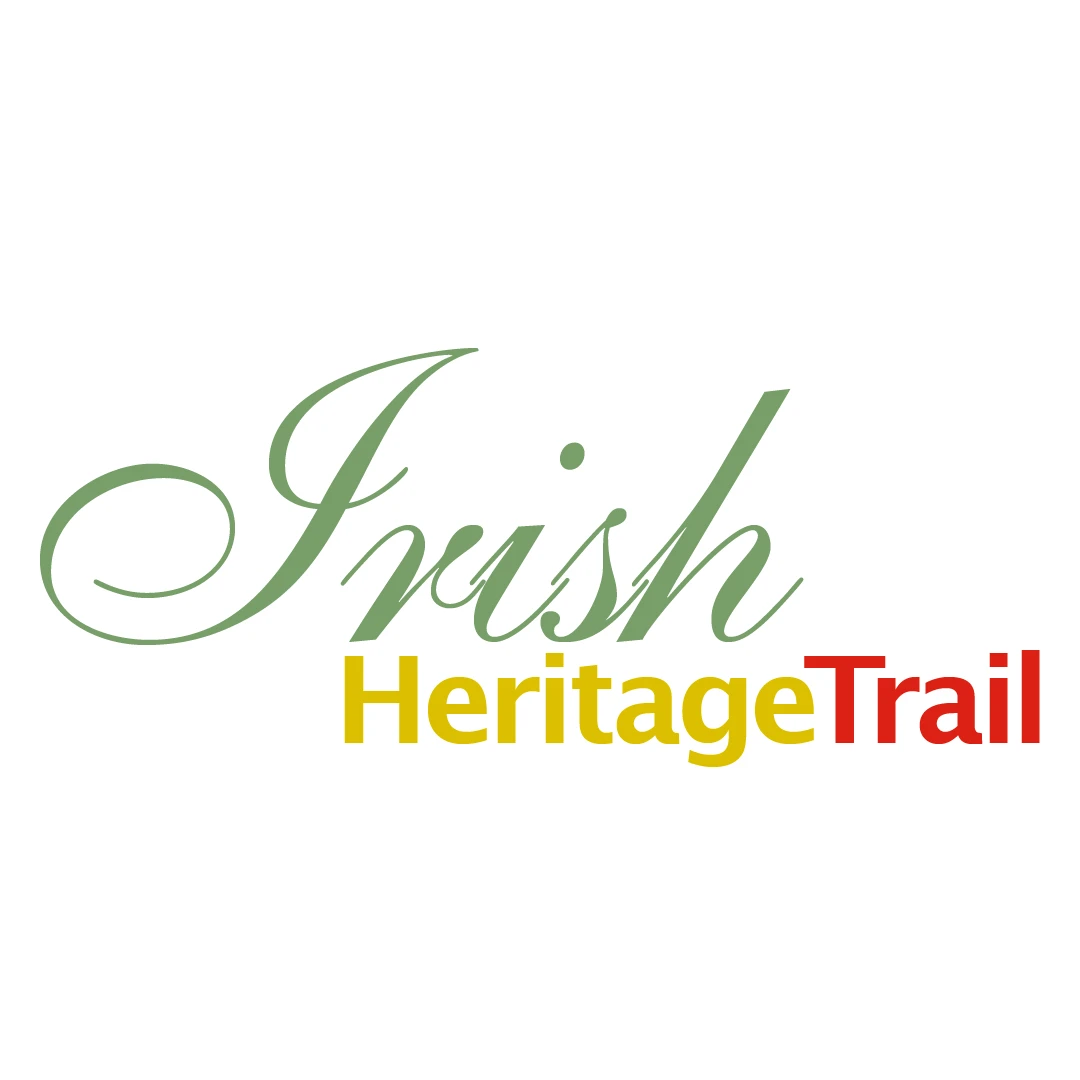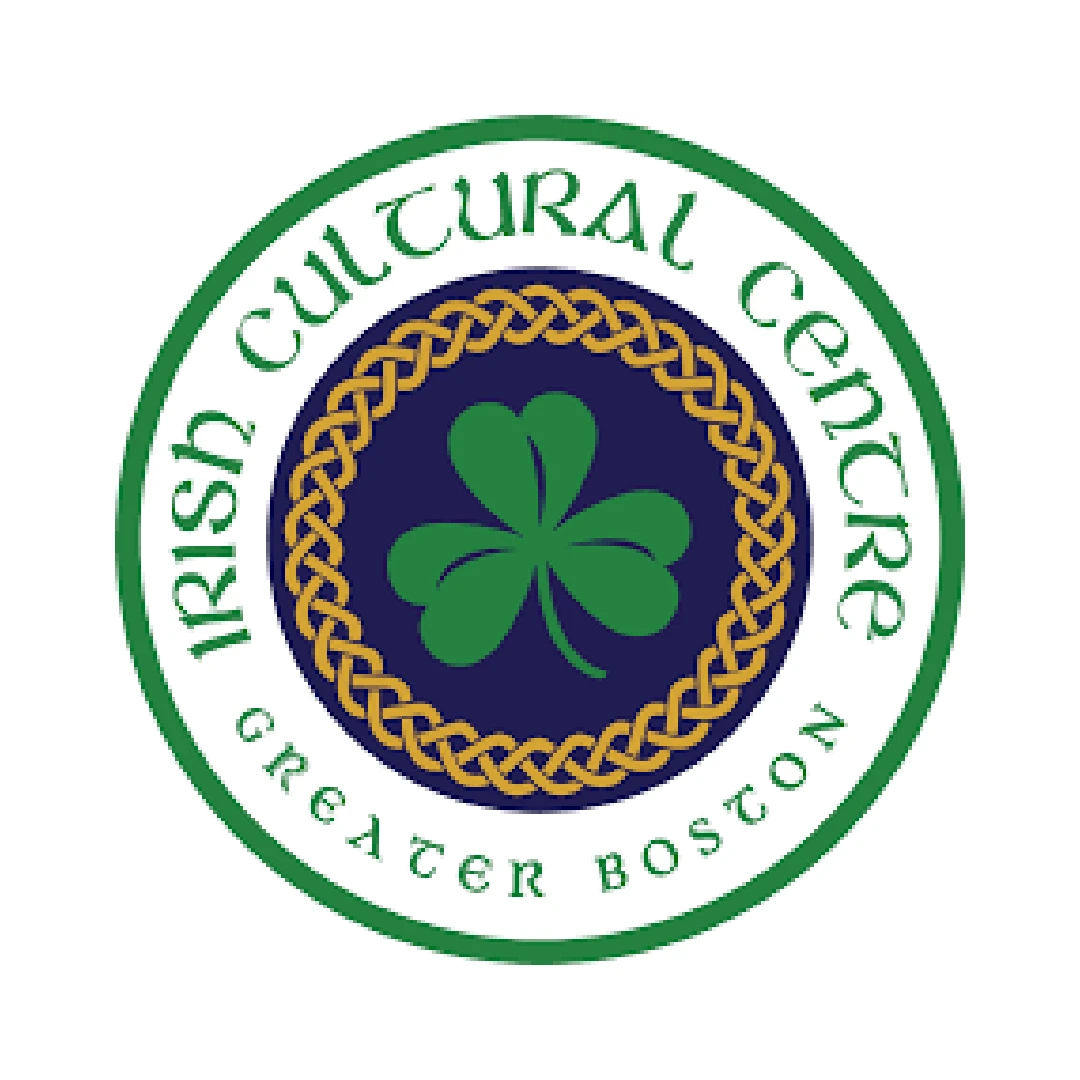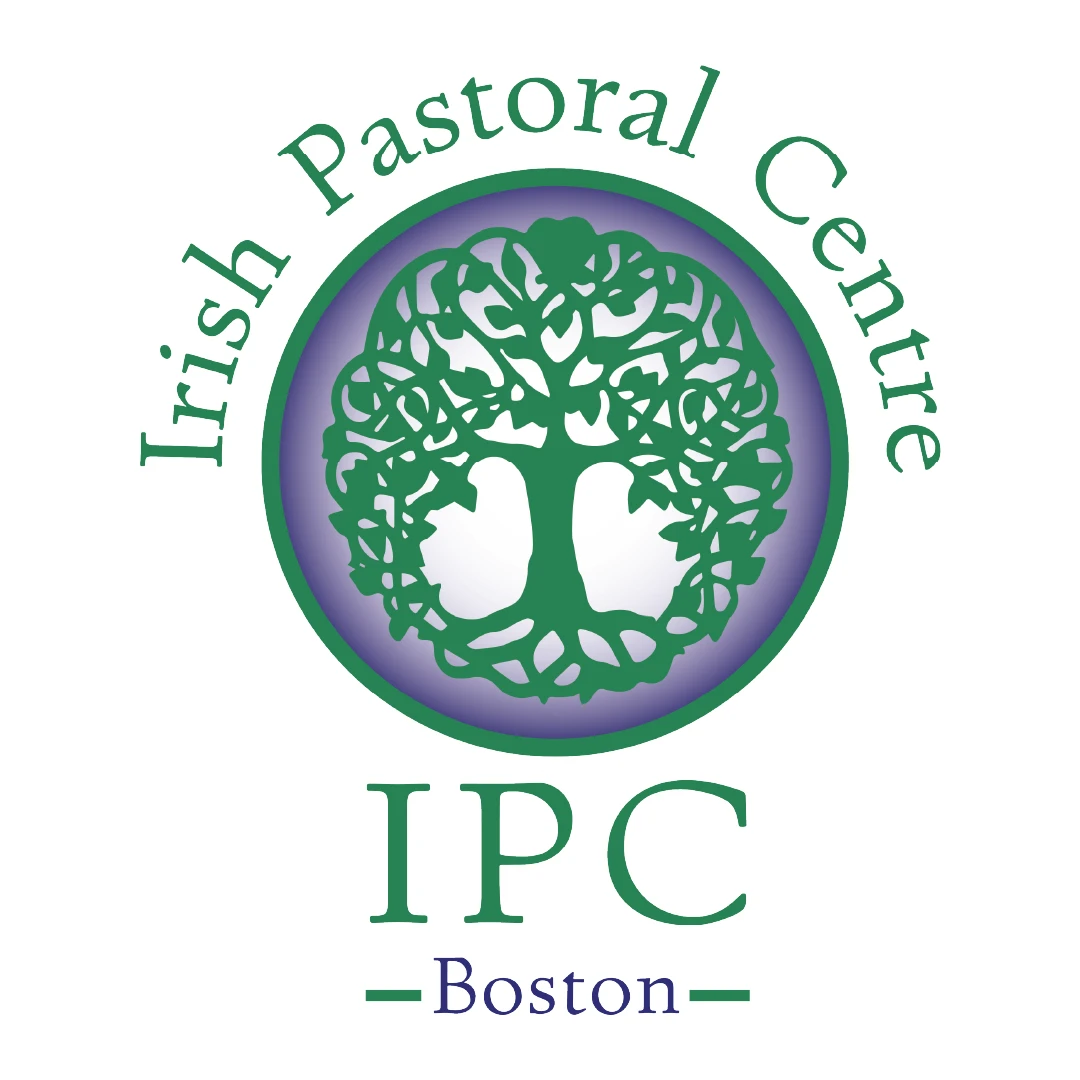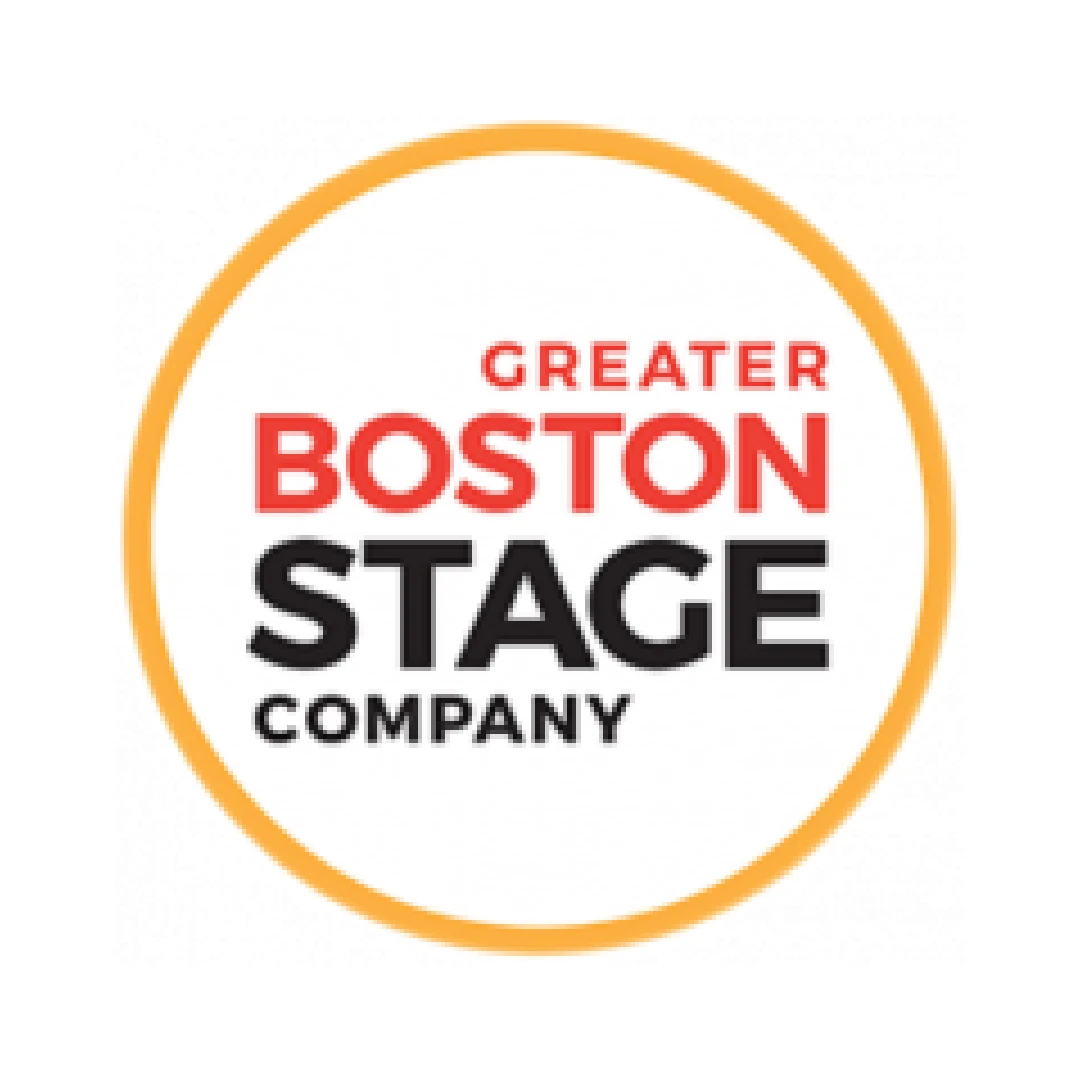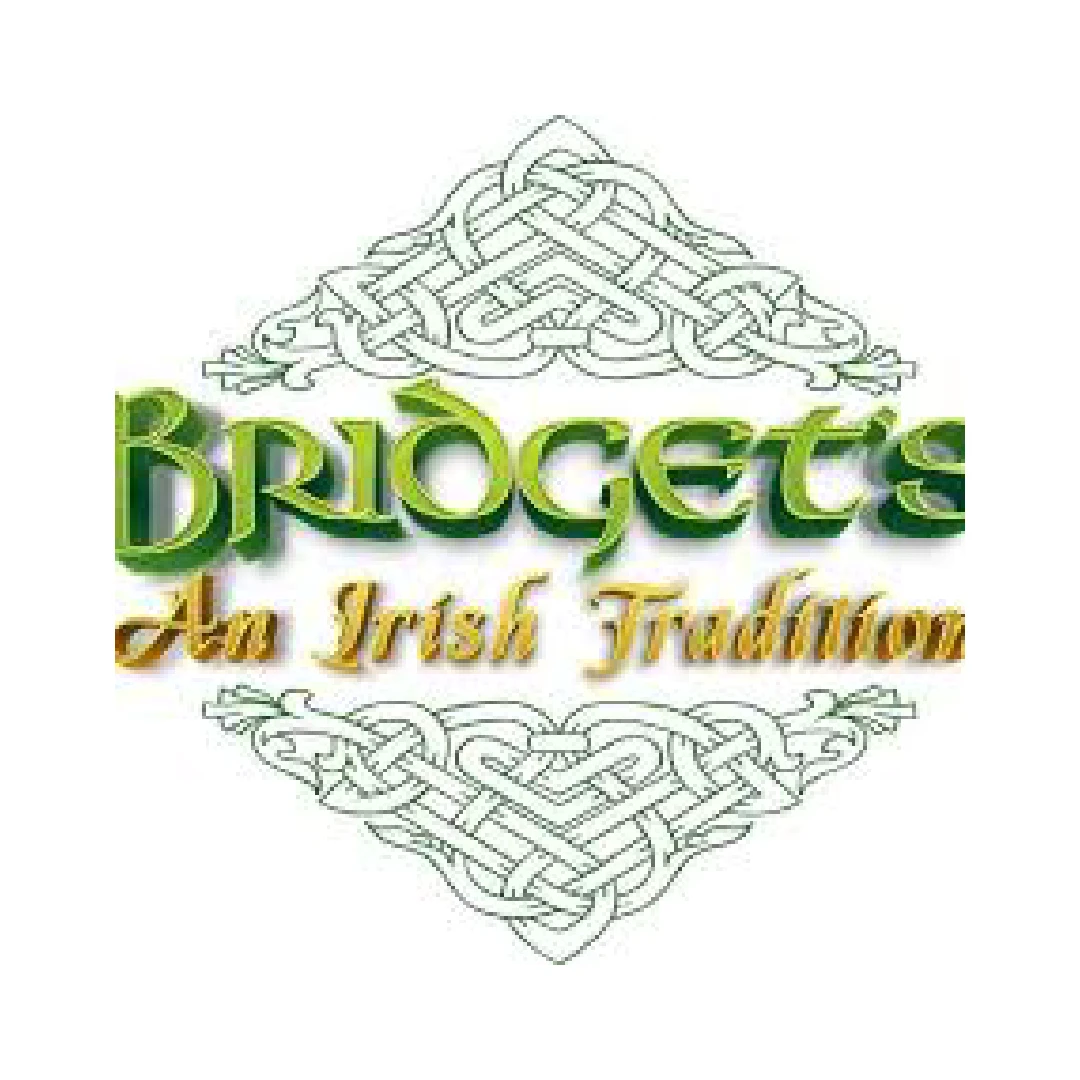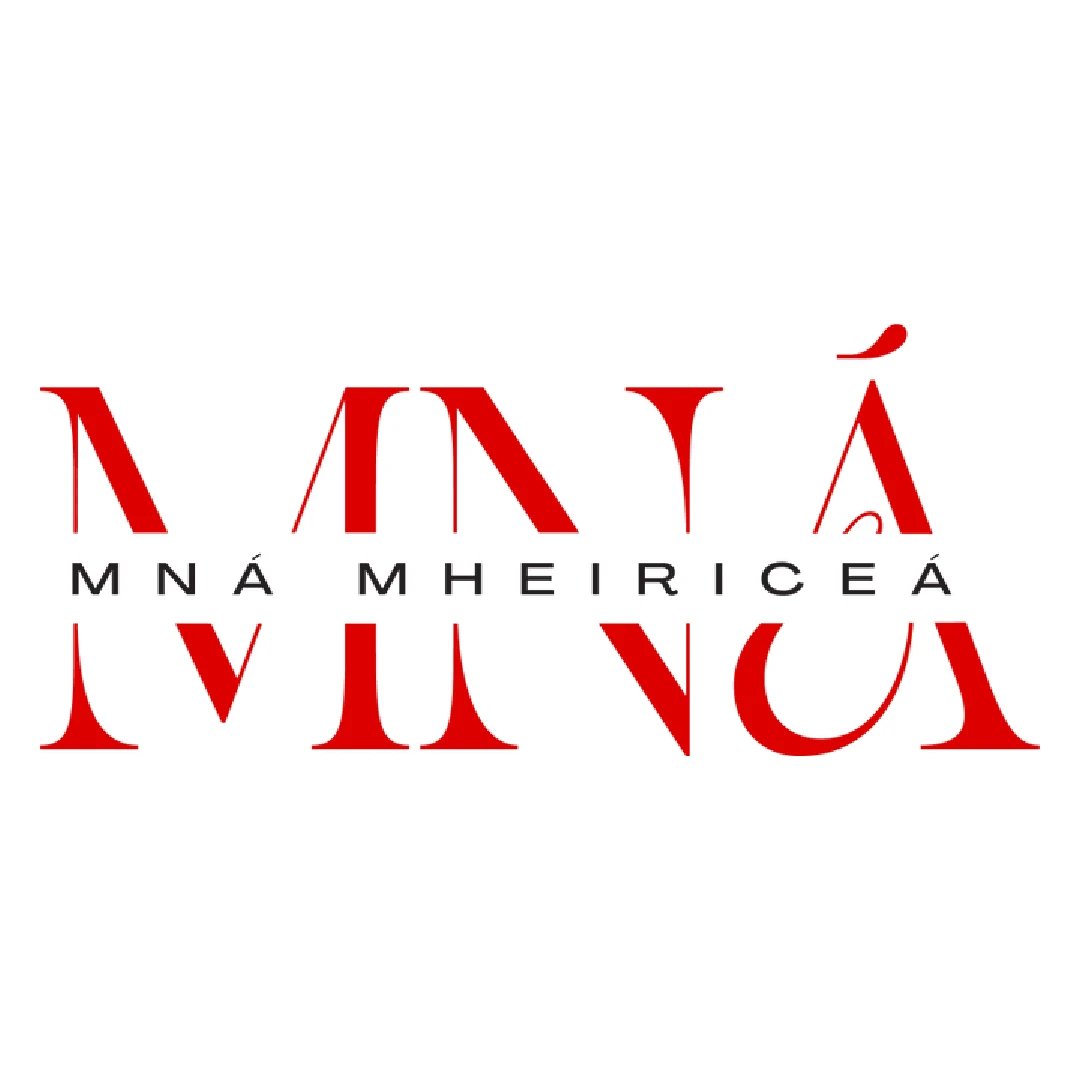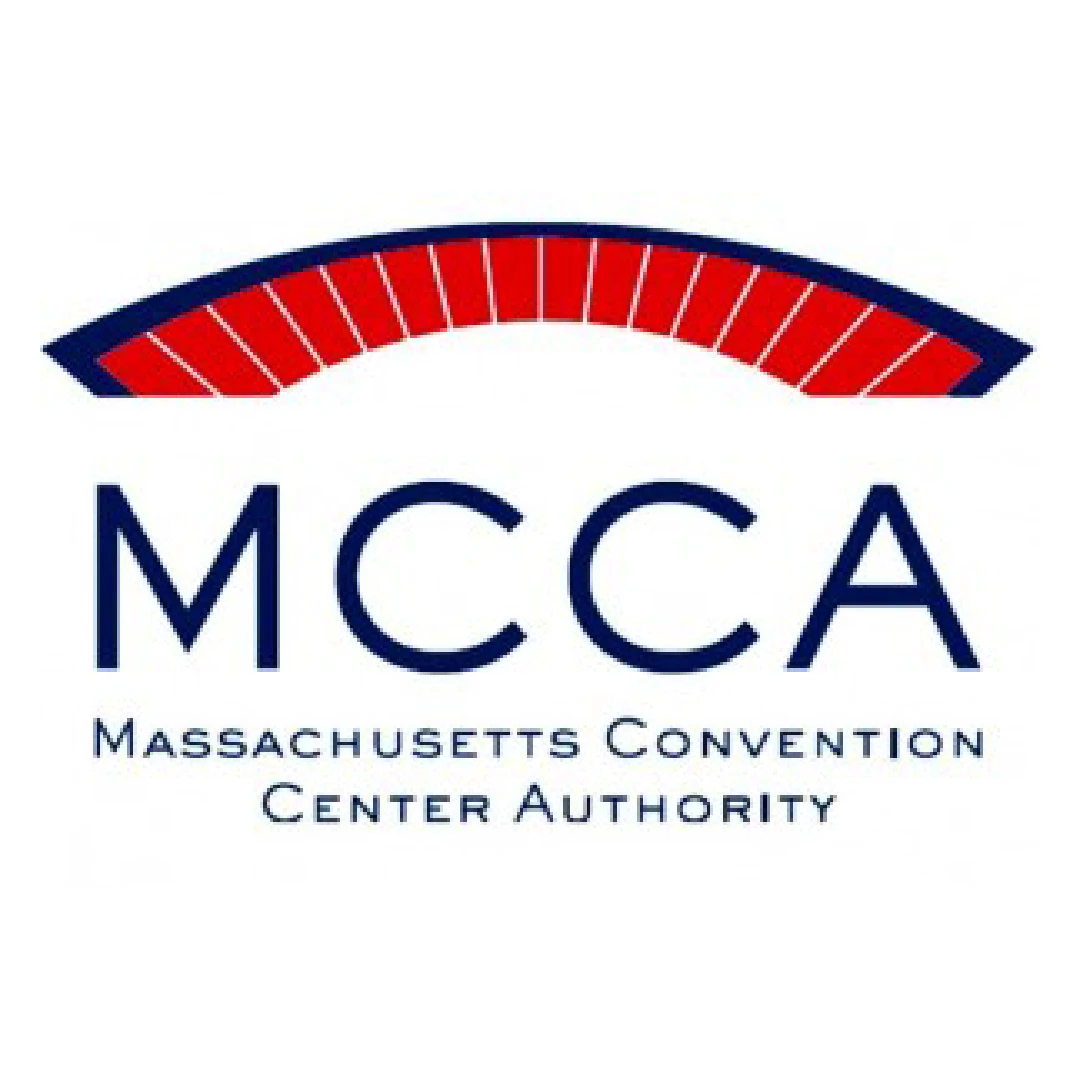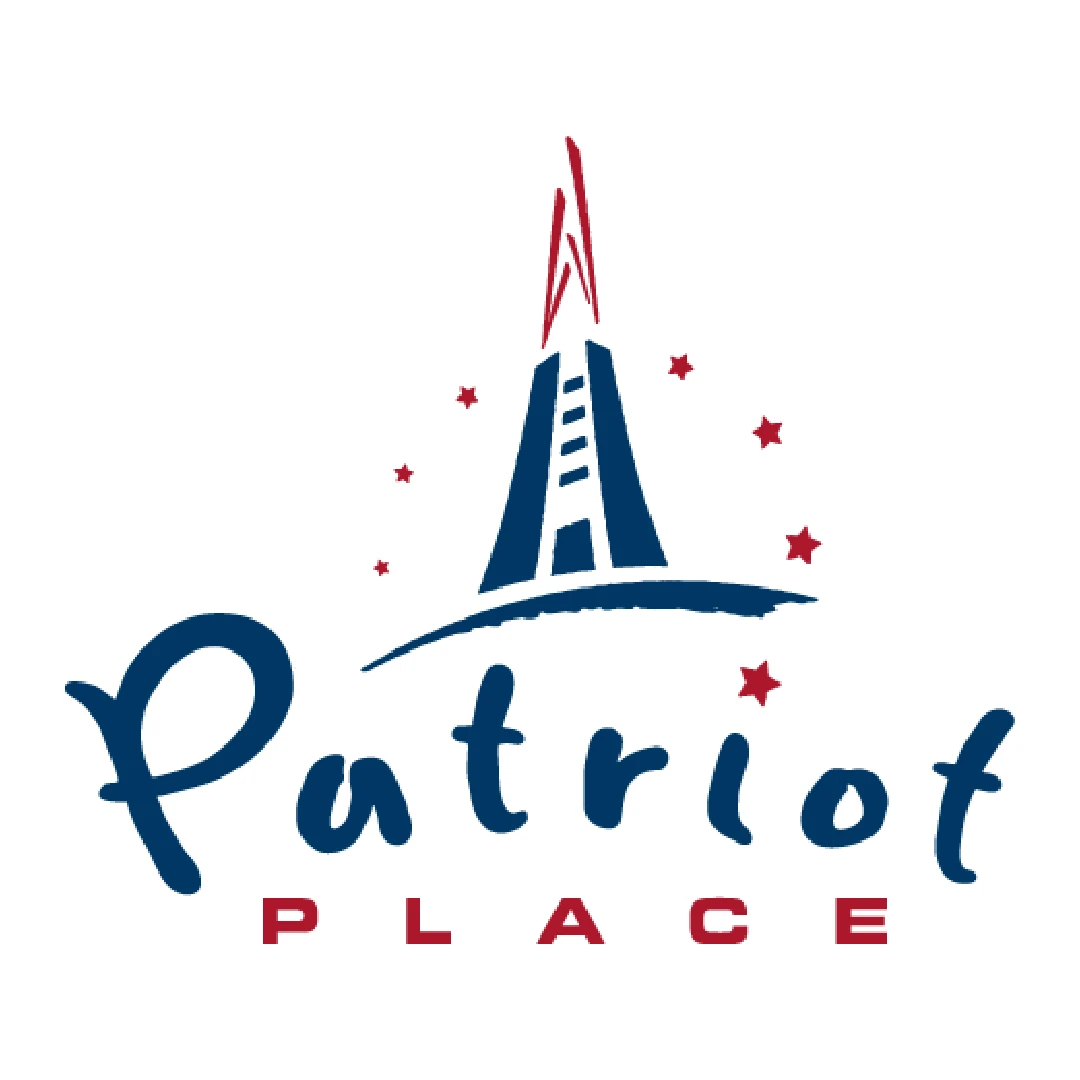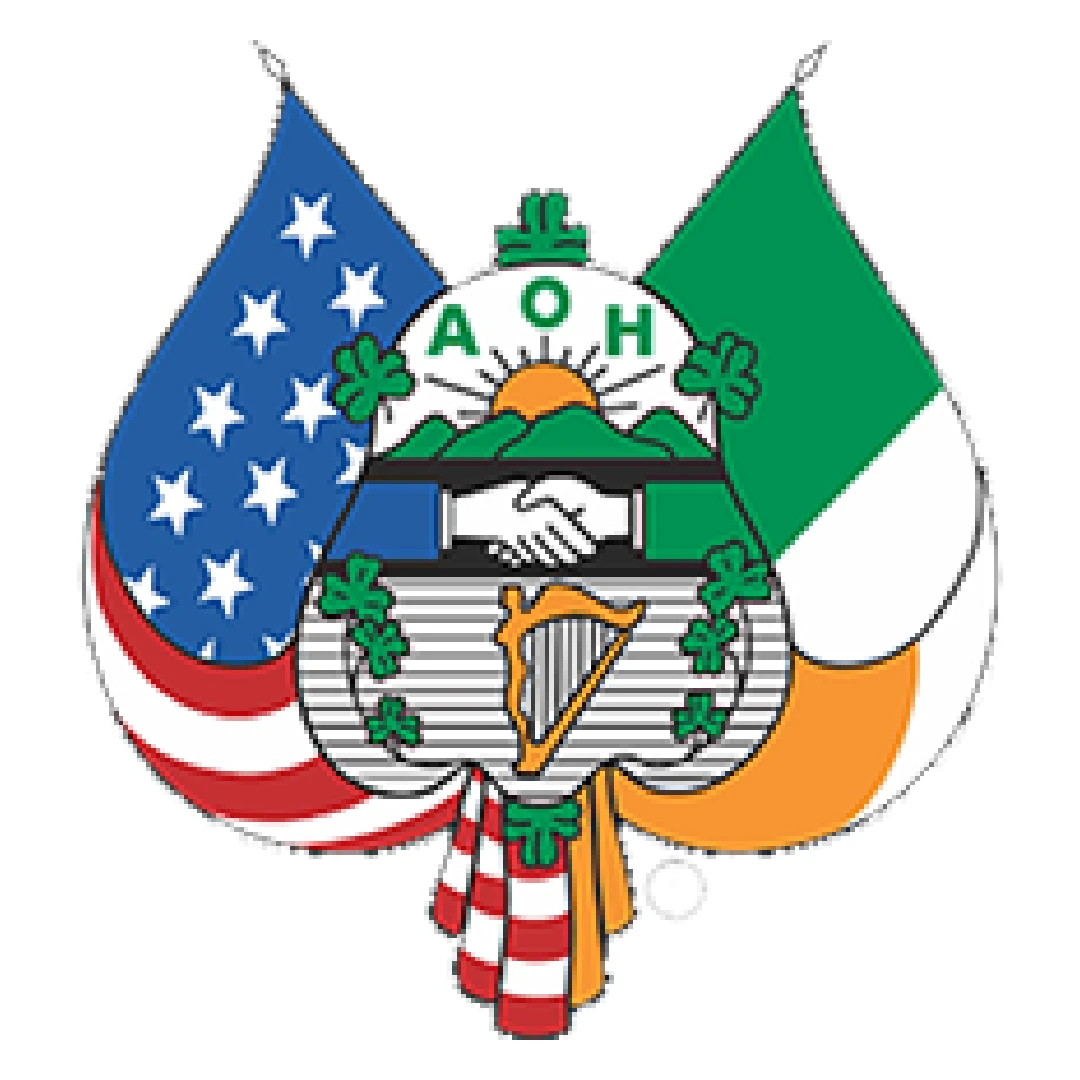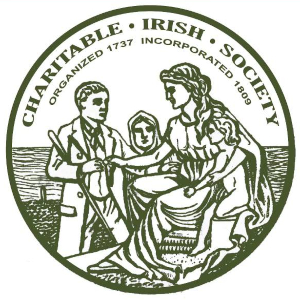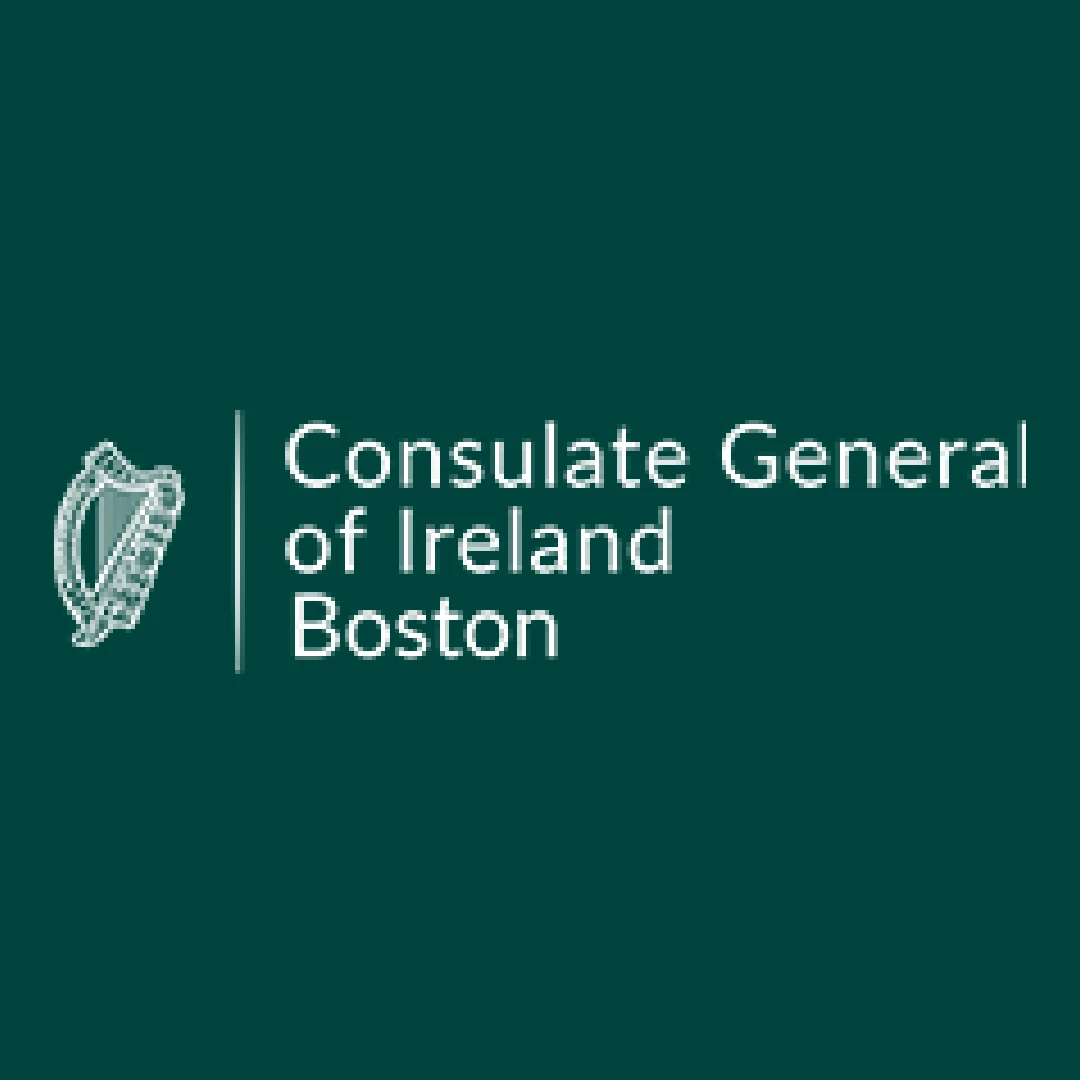History & Heritage
The next time you visit Cape Cod, make a special stop at the John F. Kennedy Hyannis Museum. The wonderful museum on bustling Main Street pays homage to President Kennedy and his deep connection to Cape Cod, where he spent magical summers with his parents, siblings and cousins in his youth and later with his…
Happy Birthday City of Quincy! The picturesque city of 100,000 residents marks its 400th anniversary in 2025 as one of the most historic and vibrant cities in New England. Located seven miles south of Boston, this bustling urban center is encircled by 27 miles of coastline facing the Atlantic Ocean and 7,000 acres of gently…
Boston’s most iconic public monument, the Shaw Memorial, was officially unveiled on May 31, 1897. The homage to the 54th Black Infantry Regiment of Boston is considered one of America’s most significant Civil War memorials. It was the first public monument to accurately depict black soldiers in military uniform. The memorial was created by immigrant Augustus…
Courtesy of National Park Service. Photo Credit: Procon Consulting (Ted Fiffy)
The popular Marina Bay Ferry in Quincy, Massachusetts resumes its new season on April 28, 2025, with exciting new operational changes to make the ferry ride more efficient and frequent, according to Massachusetts Bay Transportation Authority (MBTA). The Marina Bay Ferry runs from April 28 through November 26 from Squantum Point in Quincy, with stops at…
A three-year effort by a local Girl Scout troop to restore a neglected Civil War statue was celebrated on April 28, 2001 at a rededication ceremony in front of the Edgell Memorial Library in Framingham Center. More than 100 people attended the event. The restoration effort was spearheaded by the Framingham Girl Scout Troop 2112,…
In 2025, The Swan Boats in the Public Garden Lagoon is being added to the Boston Irish Heritage Trail, in homage to the Irish immigrant couple, Robert Paget and his wife Julia (Coffey) Paget, who launched the iconic attraction in 1877. A boatbuilder by trade, Robert developed a catamaran propelled by foot pedals to sail around…
Photo Credit: Lorianne DiSabato
The famous Boston Athletic Association (BAA) was founded in the late19th century by an unlikely coalition of leading Boston Brahmins and a famous Irish rebel, John Boyle O’Reilly (1844-90). The BAA was created at a time when amateur sports were increasingly popular across the United States. There were many collegiate teams in greater Boston and numerous small associations, but the…
Forbes House Museum in Milton
On April 11, 2001, the Parnell Society of Dublin placed a granite marker at the grave site of Ms. Fanny Parnell at Mount Auburn Cemetery in Cambridge, honoring her role as a patriot and poet of Ireland. The ceremony was led by Ireland’s ambassador to the United States Sean O hUuiginn, Irish government official Frank Murray and members…
During the centenary celebration of the Battle of Lexington and Concord on April 19, 1875, the Town of Lexington honored two American patriots – Sam Adams and John Hancock – with statues for their distinctive role in the American Revolution. Irish-born, Boston-based sculptor Martin Milmore, best known for his iconic monuments of the American Civil…
John Barry, a naval hero in the American Revolution, was born on March 25, 1745 in County Wexford, Ireland. His parents were James Patrick john Barry and Mary Ellen Cullen. Barry was “born in the townland of Ballysampson and lived his boyhood in the townland of Rostoonstown, both in the parish of Tacumshane,” according to…
The post-Famine generation of Irish women in Boston and New England were typically relegated to jobs as domestic servants, nursemaids and mill workers, before eventually being accepted as shop clerks, nurses and teachers. This work was often in addition to their primary role running households as wives and mothers. The young Irish girls of the Famine…
On March 21, 1926, two top traditional fiddlers from the British Isles and Ireland, 82 year old James Scott Skinner of Aberdeen, Scotland and 76 year old John Wiseman of Bantry, County Cork, arrived in Boston Harbor aboard the Cunard liner Carolina. They were here to compete in the World’s Old Fiddlers Contest, taking place April…
The John F. Kennedy Presidential Library & Museum is one of Boston’s most popular destinations, and welcomes local residents, school classes, convention groups and visitors from around the world to come and be inspired. Open seven days a week from 10 a.m. to 5 p.m., the JFK Library sits on a 10-acre site overlooking Boston…
On March 28, 1847, an American naval ship – the USS Jamestown – left the Charlestown Navy Yard on a humanitarian voyage that captured the world’s imagination. It was the height of the five year famine in Ireland (1845-49), and scores of Irish people were dying in the streets. The magnitude of the despair, disease and the…
Tip O’Neill Bust in Buncrana, photo courtesy of Visit Donegal Legendary politician Thomas P. ‘Tip’ O’Neill, one of the most impactful politicians of American politics in the 20th century, died on January 5, 1994 at his home in Harwichport, Cape Cod. He was 81. Born in North Cambridge on December 9, 1912, he was the son…
Portrait of Louis St. Gaudens, photo courtesy of Saint Gaudens National Historical Park Louis St. Gaudens (1854-1913), whose iconic sculptures grace the American landscape today, was born in New York City on January 8, 1854. He was the son of Bernard Saint-Gaudens from France and Mary McGuinness from Ireland, and the brother and protégé of his…
A new era in city government took hold on Monday, January 5, 1885, when Hugh O’Brien became Boston’s first Irish-born mayor. O’Brien’s victory at the polls in December finally broke the hegemony of old-line Yankees who had run local government since Boston was incorporated as a city in 1822. O’Brien defeated incumbent mayor Augustus Pearl Martin by 3, 124…
On November 14, 1888, state and city officials and citizens from greater Boston officially unveiled the Boston Massacre Memorial on the Tremont Street Mall on Boston Common. The memorial commemorates the infamous episode in which five men were shot and killed by British soldiers in Boston on March 5, 1770, an event that helped launch the…
The Boston Public Library (BPL), founded in 1848 and acclaimed as the People’s Palace, has an incredible collection of books, videos, music, genealogy resources and educational materials available to the public. The BPL also has a celebrated collection of art and sculpture throughout the library that inspires library staff, visitors and residents every day. The McKim Building itself is…
Kip Tiernan, Photo courtesy of Rosie’s Place The next time you are exploring Boston’s Irish Heritage Trail, stop by the memorial to Kip Tiernan (1926-2011), social activist, writer, teacher, visionary and provocateur. The Kip Tiernan Memorial is located in Boston’s Back Bay on Dartmouth Street between Newbury and Boylston streets, next to Old South Church, and…
Irish rebel John Boyle O’Reilly arrived in Boston in January 1870, and almost immediately he became a powerful voice for the oppressed, including his own people of Ireland who were trying to break free of Britain, but also in the United States, Blacks, Chinese immigrants and Native Americans. O’Reilly saw the British conquest of the…
Get the Latest Irish News & Events in Your Inbox
Join our mailing list

